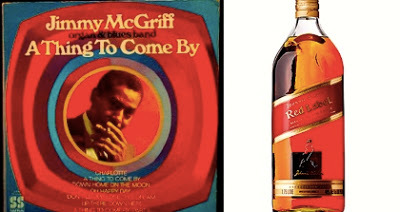Mark Anthony Neal's Blog, page 724
June 21, 2015
Denmark Vesey + The History Of Charleston's 'Mother Emanuel' Church: a Primer
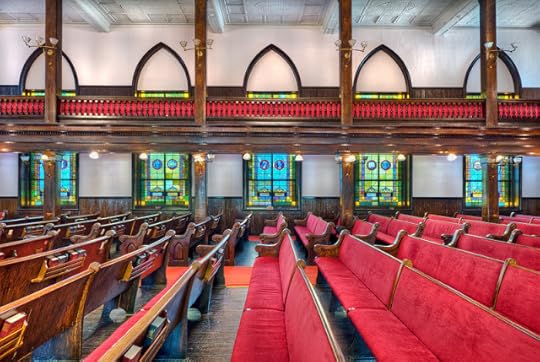 'Founded in 1816 by a black pastor named Morris Brown Mother Emanuel AME Church in Charleston is the oldest black church still standing south of Baltimore. Mother Emanuel was also the spiritual refuge of Denmark Vesey, a former slave turned carpenter who bought his own freedom in 1799, after he won $1,500 from the Charleston lottery. He was described by many as a martyr, and became symbolic of the abolitionist movement. The church was burned to the ground in 1822 because of its association with Vesey.'--
NPR's Code Switch
'Founded in 1816 by a black pastor named Morris Brown Mother Emanuel AME Church in Charleston is the oldest black church still standing south of Baltimore. Mother Emanuel was also the spiritual refuge of Denmark Vesey, a former slave turned carpenter who bought his own freedom in 1799, after he won $1,500 from the Charleston lottery. He was described by many as a martyr, and became symbolic of the abolitionist movement. The church was burned to the ground in 1822 because of its association with Vesey.'--
NPR's Code Switch
Published on June 21, 2015 07:12
June 20, 2015
Jimmy McGriff--"Down Home on the Moon" (1969)
Published on June 20, 2015 21:33
"Come Sunday" (1963) -- Eric Dolphy
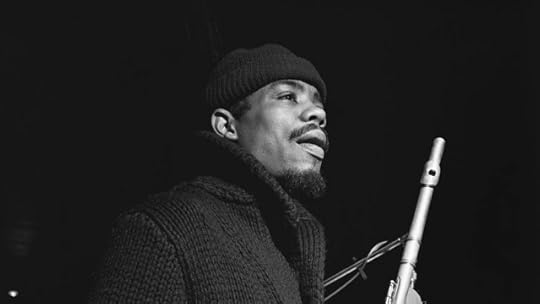 "Come Sunday" was featured in Duke Ellington's original
Black, Brown and Beige
(1943) suite. The 1958 version of the song, logically featured Mahalia Jackson at the height of her powers, and as such, the song spoke to the power of those Sunday mornings in the Black tradition. When bass clarinetist Eric Dolphy recorded his version of the song in July of 1963, his disjointed, improvised, seemingly disembodied version, anticipates a Sunday morning yet to come: September 15, 1963. Listening again more than 50 years later, Dolphy's version could have anticipated a Wednesday evening in Charleston, SC.
"Come Sunday" was featured in Duke Ellington's original
Black, Brown and Beige
(1943) suite. The 1958 version of the song, logically featured Mahalia Jackson at the height of her powers, and as such, the song spoke to the power of those Sunday mornings in the Black tradition. When bass clarinetist Eric Dolphy recorded his version of the song in July of 1963, his disjointed, improvised, seemingly disembodied version, anticipates a Sunday morning yet to come: September 15, 1963. Listening again more than 50 years later, Dolphy's version could have anticipated a Wednesday evening in Charleston, SC.
Published on June 20, 2015 21:13
Professor Panther: When Bobby Seale Met D'Angelo
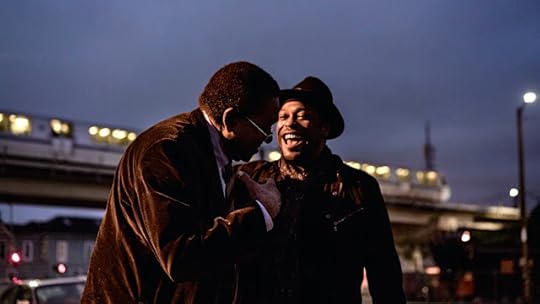 Black Panther Party co-founder Bobby Seale talks about the legacy of the Panthers with R&B artist D'Angelo.
Black Panther Party co-founder Bobby Seale talks about the legacy of the Panthers with R&B artist D'Angelo.
Published on June 20, 2015 14:41
The Doors of the Church are Open by Otis Moss III
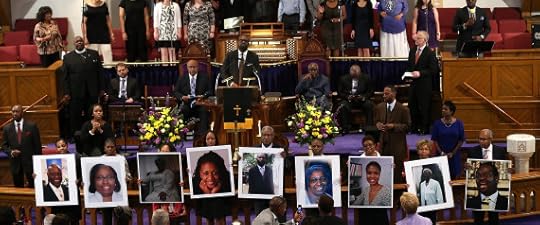 The Doors of the Church are Openby Otis Moss III | @OM3 | Huffpost Religion | NewBlackMan (In Exile)
The Doors of the Church are Openby Otis Moss III | @OM3 | Huffpost Religion | NewBlackMan (In Exile)
A gated community.A public sidewalk.A gas station.A church.A porch.A pool.A car.-Aura Bogado
The Doors of the Church are Open
"A church."
The question running through the minds of many African Americans, particularly black church folks is where and when will we ever be safe? Earlier this week nine prayer warriors were massacred at Emanuel African Methodist Episcopal Church in Charleston, South Carolina. I'm immediately reminded of images of the shell of the Sixteenth Street Baptist Church in Birmingham after it was bombed in 1963, killing four little girls preparing for a Sunday School program. Not safe, even in the Church.
On Wednesday night, members of Emanuel gathered with their pastor in what should have been a safe place armed with nothing but their bibles. Seated in their midst was a young white man who was a stranger, yet welcomed as a friend. The black church embraces all. We accord a certain degree of respect and special recognition to those who do not look like us. The young man was seated next to the pastor, where he returned the church's hospitality with unimaginable inhumanity.
Emanuel is a national treasure.
Yolanda Pierce, professor of African American religion and literature at Princeton Theological Seminary, reminds us that "the AME denomination was founded as a protest against racism" and "the black church was birthed as a sanctuary from white violence." This is true of Emanuel AME, affectionately known as "Mother" Emanuel. Its storied history dates back almost 200 years. Mother Emanuel endured despite being burned down, outlawed and destroyed by an earthquake.
Emanuel AME has been the target of racist attacks, legal harassment and arson. Each instance from 1818 - 2015 a person drunk on the wine of confederate supremacy stormed the doors of the church, set on eliminating sanctuary committed to teaching the south "a more excellent way" called love. Emanuel at every turn has responded with love rooted in justice by teaching literacy, producing leaders, protesting unequal treatment, fighting for economic parity and demanding the confederate flag be replaced by a symbol for all South Carolinians. Mother Emanuel exemplifies the best of our religious tradition--liberation, love and reconciliation.
This storm too shall pass.
Despite this breach, the black church will continue to serve as a sanctuary against racism and hatred. Across the country many of us sought comfort and solace in the very temples the gunman's hate attempted to destroy. We are encouraged by the images of South Carolinians of all races coming together to mourn and remember the fallen. Yet as we await justice, we must commit ourselves to dismantling the symbols that fuel such hatred, beginning with the Confederate battle flag. When other flags were lowered to half-mast in honor of the victims, that flag was not. It reminds us of its persistence as a symbol of insolence. It is structurally impossible to lower it over the State Capitol; however, it is possible to remove it by either executive or legislative order. It must come down.
The Confederate battle flag has been a symbol of race hatred ever since its inception, and in the wake of this tragedy it becomes increasingly identified as a symbol of domestic terrorism for those who would like to "take back our country" to our most turbulent apartheid past. If South Carolina truly intends to honor the victims of the Mother Emanuel massacre, it can no longer associate with the image of this blood stained banner.
The country's inability to connect a moral conversation to the dialogue about gun violence, mental health and racism is the subtext of this tragedy. Constitutional liberty must never overshadow the dialogue for public safety. The gunman's mental state is of concern for us all along with our refusal as a country to speak about the moral imperatives of gun safety and mental illness as a public health issue. We cannot definitively say access to "smart gun technology" would have prevented this tragedy or increased support for mental health programs might have helped this disturbed young man. We can say such support can stop future tragedies and provide a safer space for all to worship and dare us as a nation to create the space for a yet to be United States of America.
When we see the faces of those who were lost and learn of their lives, we are devastated not just by the senselessness of the act but also because we know these victims. We know them--the civil servants, the recent graduate, the librarian, the track coach, the grandfather and the great-grandmother. They are representative of the members of almost any black church, assembled under the leadership of a civic-minded young pastor. They were hunted down by a young person infected with racialized hatred and mental instability who had access to weapons designed for sport. He has terrorized all of us.
His actions will not terrify us from remaining true to the history and mission of the black church. In honor of those nine souls and of the countless others who preceded them, we will continue to exist, to protest, to remain open, to stand, and to pray. The doors of the church are open.
+++
The Rev. Dr. Otis Moss III is the Senior Pastor of Trinity United Church of Christ in Chicago.
Published on June 20, 2015 08:34
"We Will Shoot Back: Armed Resistance in the Mississippi Freedom Movement"
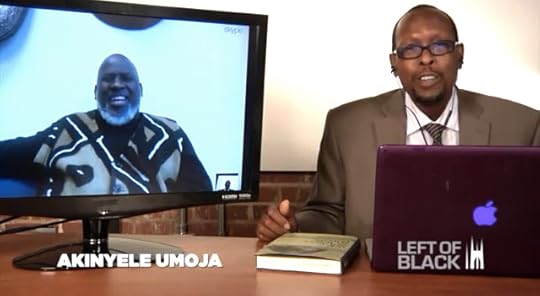 Left of Black host Mark Anthony Neal is joined by Professor Akinyele Umoja (@BabaAk), author of
We Will Shoot Back: Armed Resistance in the Mississippi Freedom Movement
(NYU Press).
Left of Black host Mark Anthony Neal is joined by Professor Akinyele Umoja (@BabaAk), author of
We Will Shoot Back: Armed Resistance in the Mississippi Freedom Movement
(NYU Press).
Published on June 20, 2015 07:31
All In The Family: Father-Son Pairings In Jazz
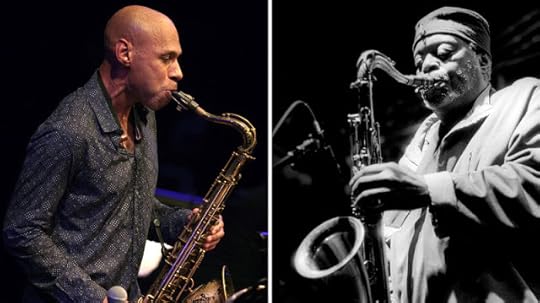 Bassist and host of NPR's Jazz Night in America Christian McBride talks with All Things Considered about Father-Son collaborations in Jazz including the late Dewey Redman and his son Joshua Redman.
Bassist and host of NPR's Jazz Night in America Christian McBride talks with All Things Considered about Father-Son collaborations in Jazz including the late Dewey Redman and his son Joshua Redman.
Published on June 20, 2015 06:51
June 19, 2015
#TheSpin: Black Innocence + Blue Crime + White Supremacy

Lucas Jackson / Reuter On this episode of #TheSpin, host Esther Armah is joined by Christina Greer, Asha Bandele and Kaila Adia Story in a conversation about Black Innocence, Blue Crime and White Supremacy.
Published on June 19, 2015 08:34
Racial Terrorism, Rachel and Responsibilities of the Body Politic by David Wall Rice
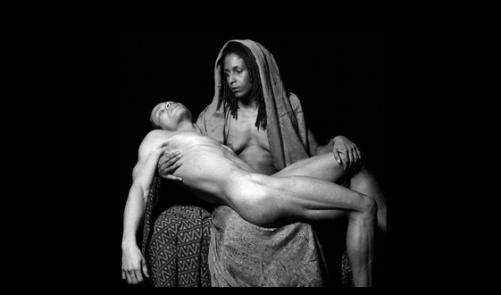 Renee CoxRacial Terrorism, Rachel and Responsibilities of the Body Politicby David Wall Rice | special to NewBlackMan (in Exile)
Renee CoxRacial Terrorism, Rachel and Responsibilities of the Body Politicby David Wall Rice | special to NewBlackMan (in Exile)It’s difficult to step into the chorus of pain that presents itself as consequent of the racial violence upon which the United States is built. And the difficulty is mostly because the truth that America is racist is a truth that folks don’t want to deal with because, like most truths, it frames the reality within which we have to operate.
If America is racist, then as a member of the body politic we are complicit. And if we are complicit, then we have to do more than celebrate the pundits, academics and everymen and women that speak truth to power across media spaces. We have to adjust our worldview, operate from different assumptions and work to be better representatives of the democracy within which we often wrap ourselves.
That adjusted democracy looks like the Cleveland 8; Opal Tometi, Alicia Garza and Patrisse Cullors; Sa'tori Ananda; Loretta Lynch; dream hampton; and it looks like Denmark Vesey and those at bible study on Wednesday night at Mother Emanuel African Methodist Episcopal Church who prayed with a hateful and scared white man before he shot nine parishioners dead.
In my academic lectures and writings I often talk of the elegance and thoroughness of racism. The individual, institutional and cultural construct is so effectively interwoven into the American quilt that we don’t see it, or it is placed just so such that we don’t have to see it.
We can have fun with a narcissistic white woman who plays with selective swaths of the Black American experience – stoking our confusion with the cultural historical and biopsychological realities of race in the process. We do not readily acknowledge that the personal agency she assumes is cornerstone of a socializing white-missionary privilege that situates Black folk as somehow dispossessed of their own agency. This is racist in personal exercise and institutional framing, doubly so because of the media’s hypocritical amazement at Black cultural appropriation considering their deep participation in monetizing Black pain, pride and productivity. Illustrating examples of this is really just too tedious and frustrating to place center, but go to the crests of popular culture for convenience and work your way back from there.
Though the two are extreme in their perceived distance from one another on the face of things, the complex nature of race in America suggests the psychological violence we involve ourselves with in droning on about Rachel is bookend with the racist terrorism repeated in Charleston, SC. Certainly, we are a bit embarrassed that we took the former Spokane, WA chapter NAACP president so seriously considering the horror in South Carolina. And then we remember McKinney, Baltimore, #BlackLivesMatter and the reality of race in the United States.
Of course, many of us in the margins at best, killed for being Black at worst, already experience the reality of American racism – it is a universal context. The prayer is that Black people don’t have to keep dying for the rest of the nation to recognize and to help with revolution.
+++
David Wall Rice is Assistant Provost, associate professor and Chair of the Department of Psychology at Morehouse College. At the College he also leads the Identity Orchestration Research Lab and serves as faculty for the Cinema, Television and Emerging Media Studies (CTEMS) program. In addition to social critique and commentary across media outlets, David is currently at work on his second book, Race, Gender, Class and Context: Being and Becoming More.
Published on June 19, 2015 08:01
Edwidge Danticat on Mass Deportation of Haitian Families from the Dominican Republic
 Haitian-American novelist Edwidge Danticat talks with Democracy Now about the he Dominican Republic's decision to de-nationalize half-a-million Dominicans of Haitian descent.
Haitian-American novelist Edwidge Danticat talks with Democracy Now about the he Dominican Republic's decision to de-nationalize half-a-million Dominicans of Haitian descent.
Published on June 19, 2015 05:34
Mark Anthony Neal's Blog
- Mark Anthony Neal's profile
- 30 followers
Mark Anthony Neal isn't a Goodreads Author
(yet),
but they
do have a blog,
so here are some recent posts imported from
their feed.


